What Are Parasitic Wasps & How Can They Help Your Lawn?
The name ‘Parasitic Wasps’ is unnecessarily terrifying, because the truth is that the presence of these bugs around your home might be both an indicator of an outbreak of ...

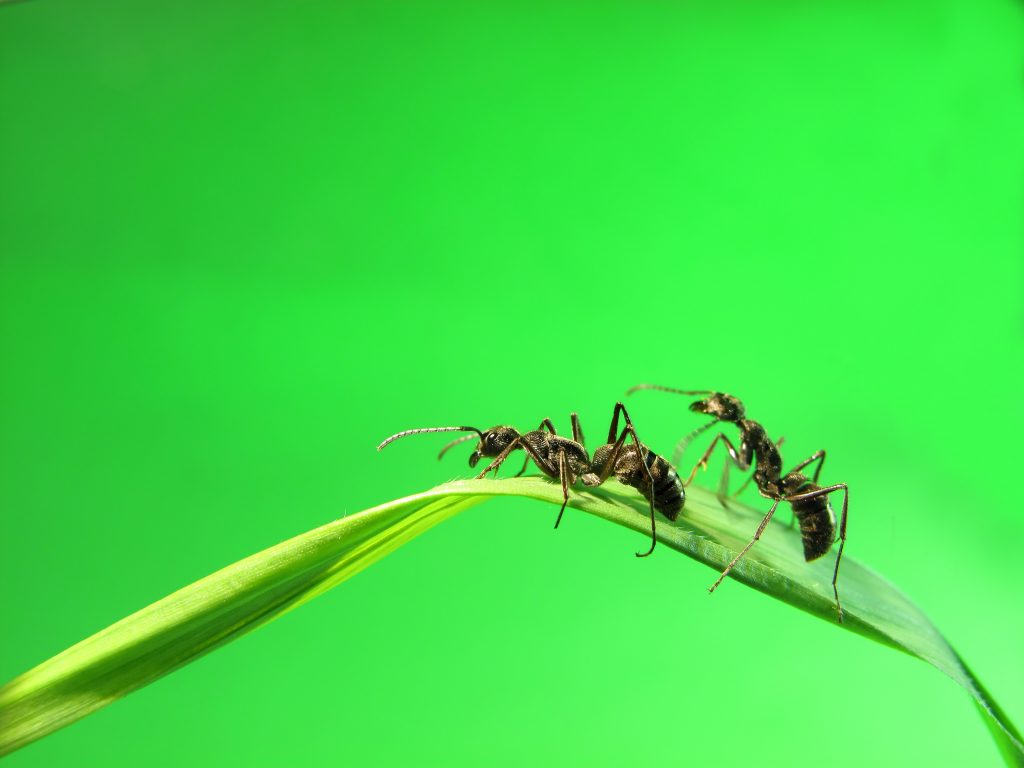 Having a perfect lawn is a dream many homeowners strive for. While managing all the basics, including watering, mowing, and fertilising, is fairly straight forward, there’s one aspect of lawn care that’s less easy to control – lawn pests.
Having a perfect lawn is a dream many homeowners strive for. While managing all the basics, including watering, mowing, and fertilising, is fairly straight forward, there’s one aspect of lawn care that’s less easy to control – lawn pests.
Lawn pests can be numerous and varied. For example, underground, your grass could become a meal for White Curl Grubs and Mole Crickets. Other lawn insects, including Armyworms and Two Spotted Mites, could attack the stalks of your favourite turf grass.
With a little understanding of the different lawn pests that exist within your area, you can easily keep them under control with good lawn management or an effective pre or post-emergent insecticide.
Wondering what pests may be the problem? Read on for a comprehensive list of Common Lawn Pests and solutions to get rid of them!
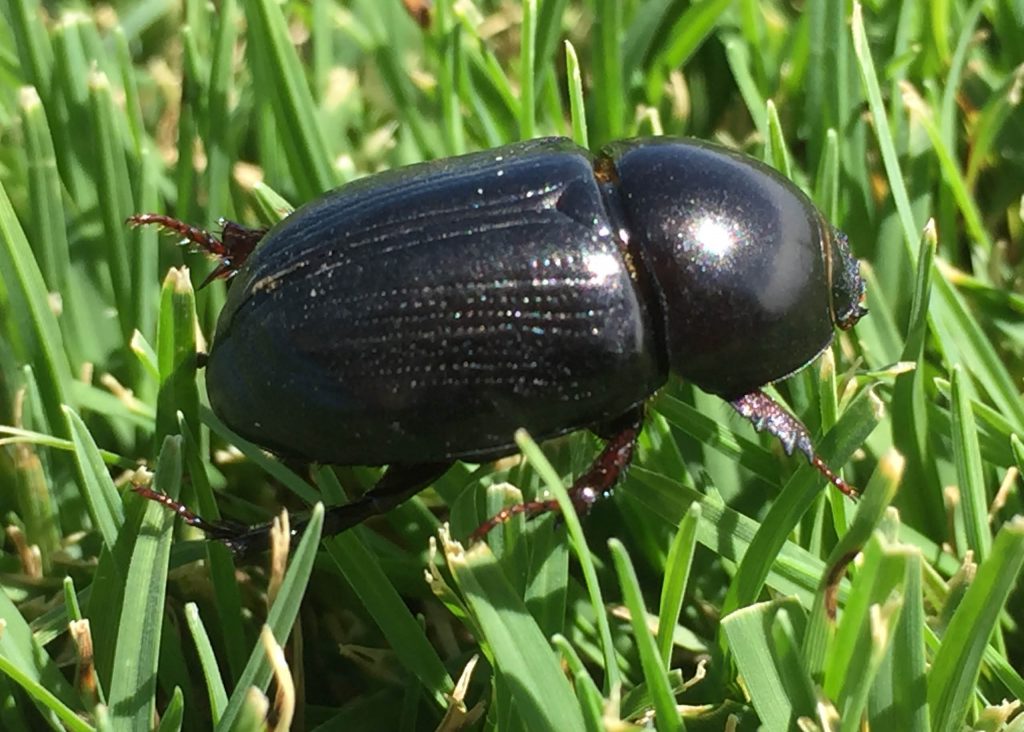 The African Black Beetle is a shiny jet-black scarab soil-dwelling pest, up to 15mm long, with serrated front legs and looks very similar to a cockchafer.
The African Black Beetle is a shiny jet-black scarab soil-dwelling pest, up to 15mm long, with serrated front legs and looks very similar to a cockchafer.
African Black Beetle’s larvae are white to creamy-white, soft bodied curl grubs up to 25mm long.
The most active time of the year for African Black Beetles in your lawn is during spring and summer.
The female African Black Beetle can lay up to 80 eggs that hatch in 2 to 5 weeks.
To control the African Black Beetle myhomeTURF recommends a suitable insecticide with the Common Active Ingredient Chlorantraniliprole for long-term residual control.
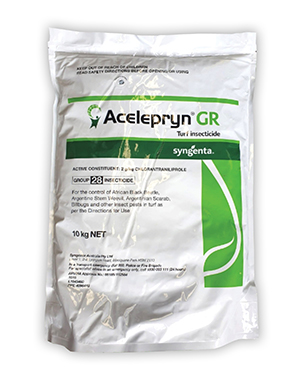
Acelepryn GR (10kg) is a non-scheduled reliable granular insecticide that has a low environmental impact. Suitable for Zoysia, Kikuyu, Couch and Buffalo grasses. Always read the safety directions and instructions on the product label before use.
SHOP NOW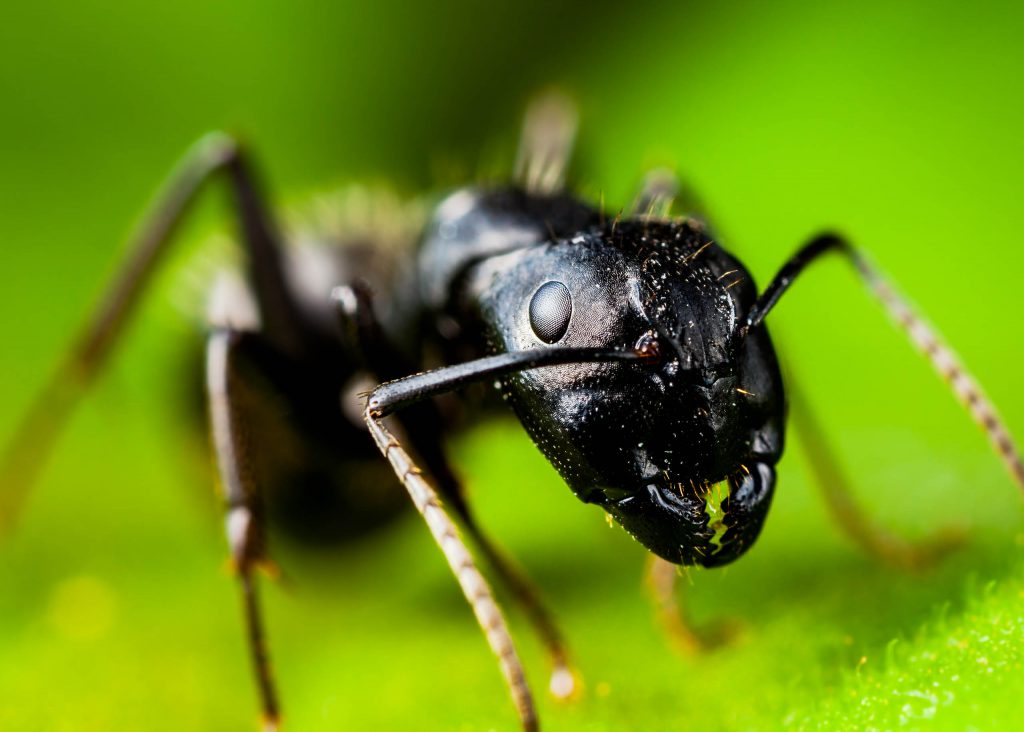 Ants can be beneficial in your lawn by moving organic material into the soil, creating tunnels and aerating the soil.
Ants can be beneficial in your lawn by moving organic material into the soil, creating tunnels and aerating the soil.
Ants, however, can cause cosmetic damage to your lawn as they create tunnels and mounds of excavated soil on the lawn’s surface.
Ants are small, long and thin insects ranging in size from 1-50 mm in length and vary in colours of black, brown, yellow, and are sometimes metallic.
Ants prefer well-drained soil in lawns that is not compacted – so healthy lawns are not removed from ant damage.
Homemade Ant killer is an option and can be done by simply pouring boiling water onto the Ants nest that is on your lawn. This homemade method can take several attempts and result in wet, boggy areas in your lawn as well as cause your grass to turn brown through scalding.
Using both dishwashing detergent and olive oil to control Ants in your lawn is another option, however, this can have detrimental affects to your lawn by making the treated section paler in colour.
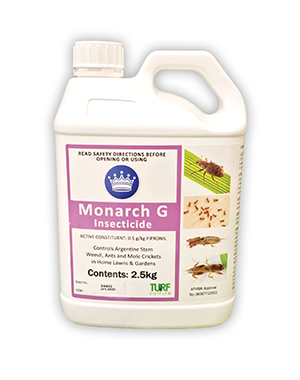
Monarch G 2.5kg is an active constituent insecticide for the control of Ants and many other insects. It is suitable for use on Zoysia, Kikuyu, Couch and Buffalo grasses.
SHOP NOW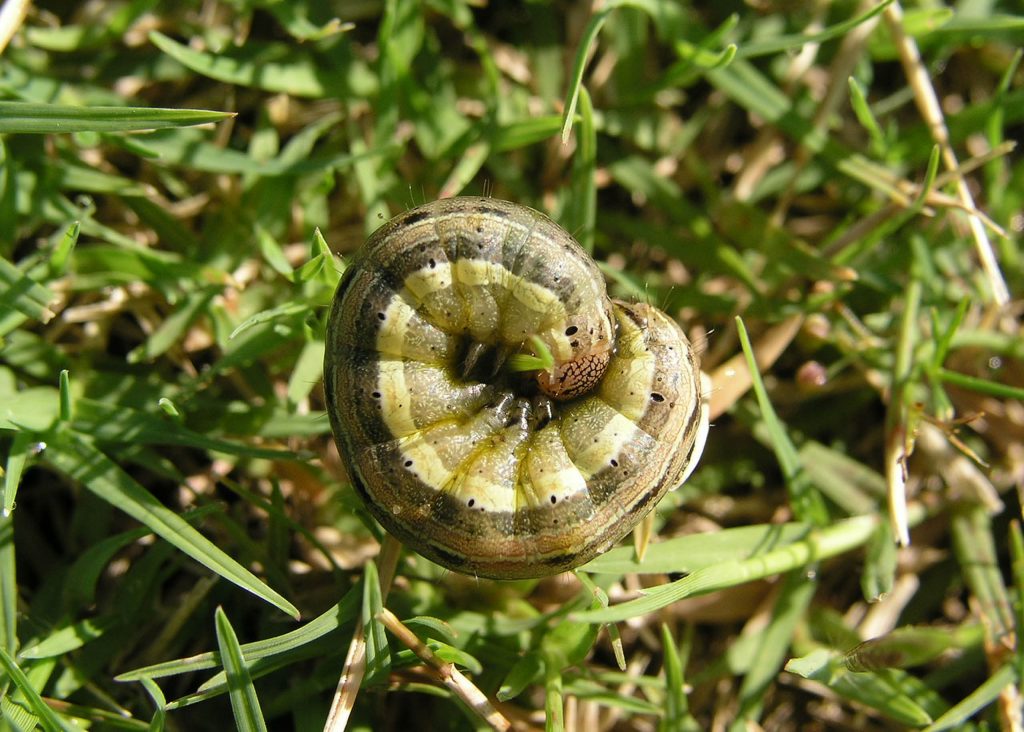 Army Worms are caterpillar grub pests found in lawns.
Army Worms are caterpillar grub pests found in lawns.
Army Worms vary in colour from green to brown to black, can reach a maximum length of about 40mm, and will become plump as they feed and mature.
Large numbers of Army Worms are possible due to their moth parent being able to lay up to 500 eggs in a single laying, and then repeat the same process the following night.
These lawn grubs get their name because they form large armies, devastate large areas of lawn, and then quickly move onto the next lawn.
Ideal weather conditions during summer and autumn can see Army Worms appear in plague proportions where they leave brown patches all over your grass.
Army Worms are very difficult to find, they spend their days hiding at soil level, and deep inside the thatch layer of the lawn.
It’s at night that Army Worms will come out and spend their entire night feeding on your lawn.
Once Army Worms have been identified, they are treated with a lawn insecticide that has the Common Active Ingredient Chlorantraniliprole.
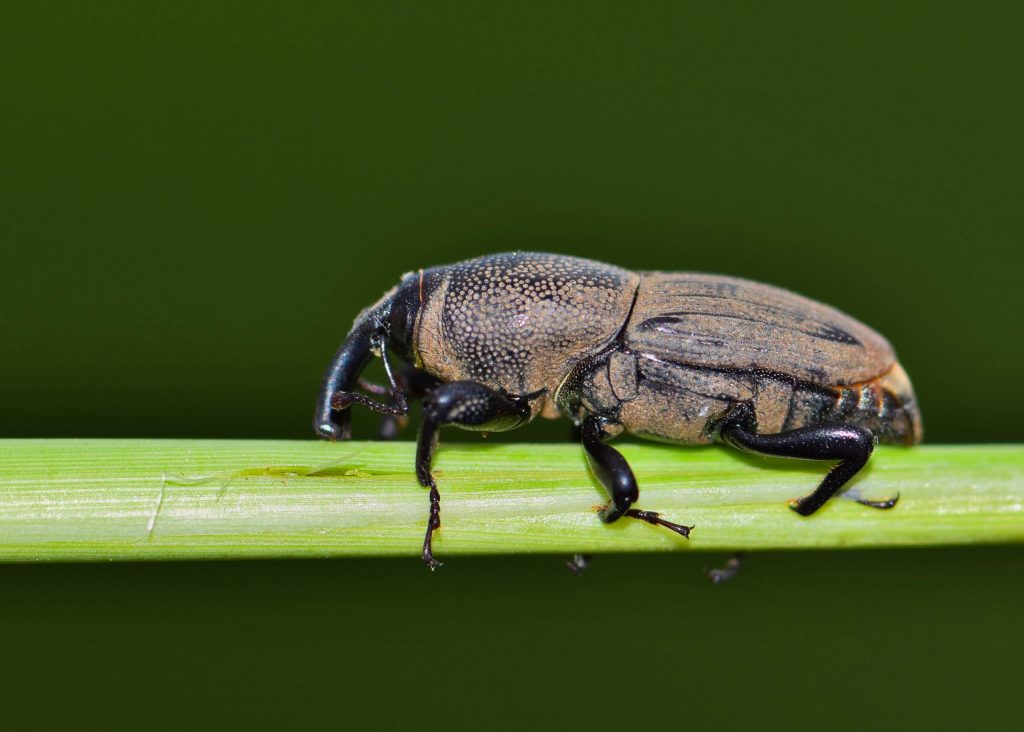 A type of weevil, adult Billbugs chew holes in your grass so they can lay their eggs.
A type of weevil, adult Billbugs chew holes in your grass so they can lay their eggs.
The eggs hatch after two weeks and the larvae eat the grass from the inside out. They then move to feeding on the stem and roots, causing most of the damage to your lawn.
Signs of damage include yellowing plants, hollowed out stems filled with sawdust-like material that break off easily, and the development of patches of brown dead grass between November and February.
To control Billbug larvae, myhomeTURF recommends products containing the active ingredients Imidacloprid, Bifenthrin, Chlorantraniliprole or Thiamethoxam.
myhomeTURF recommends using Acelepryn, an effective insecticide that can be purchased through our online store.
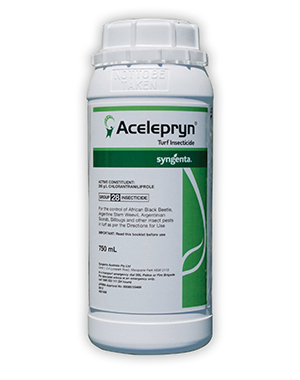
Acelepryn 750ml is a low environmental impact liquid insecticide for the control of larvae and beetles, including Billbugs. It is suitable for use on Zoysia, Kikuyu, Couch and Buffalo grasses.
SHOP NOW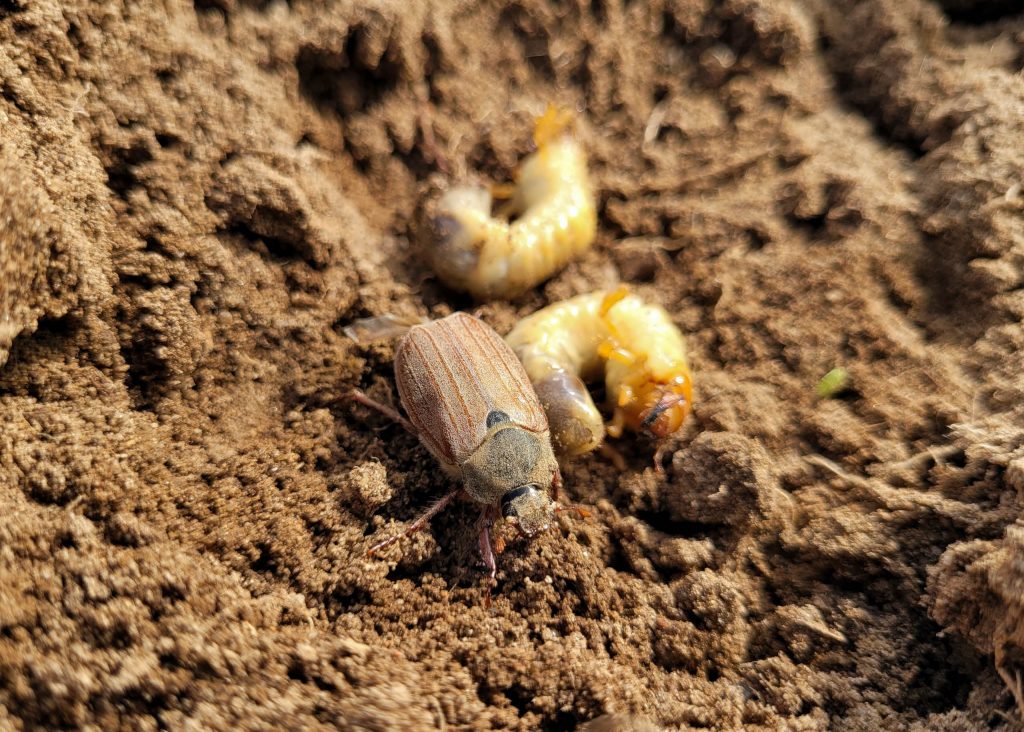 Chafer Grubs are the larvae of different types of scarab and cockchafer beetles, which live in the soil and feed on plant roots.
Chafer Grubs are the larvae of different types of scarab and cockchafer beetles, which live in the soil and feed on plant roots.
The most damage is caused by final stage larvae feeding during autumn and winter.
In a severe infestation, you’ll likely be able to roll the grass up like a rug.
To control Chafer Grubs, myhomeTURF recommends products containing the active ingredients Bifenthrin or Chlorantraniliprole.
myhomeTURF recommends using Acelepryn, an effective insecticide that can be purchased through our online store.

Acelepryn GR 10kg is a low environmental impact franular insecticide for the control of larvae and beetles, including Chafer Grubs. It is suitable for use on Zoysia, Kikuyu, Couch and Buffalo grasses.
SHOP NOW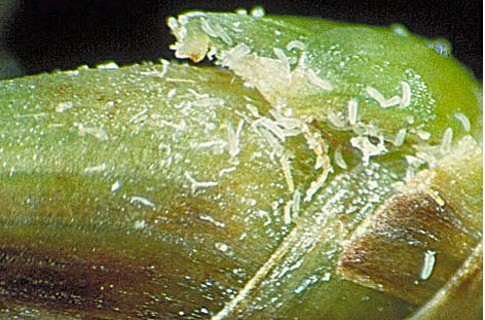 Couch Mites are very tiny pests that cannot be seen on your Couch lawn with the naked eye.
Couch Mites are very tiny pests that cannot be seen on your Couch lawn with the naked eye.
They live and feed in amongst the leaf sheaths of your Couch and can breed very quickly.
Couch Grass Mites are active throughout summer, particularly during hot and dry conditions.
Infected lawn from Couch Grass Mites exhibits a slight yellowing of the leaf tips followed by shortening of the internodes and leaves – stunting your lawn’s growth.
Spread of Couch Grass Mite can easily occur through lawn clippings or as the mites are dispersed in the wind.
To control the Couch Grass Mites myhomeTURF recommends a suitable insecticide with the Common Active Ingredients Clofentezine and Abamectin.
myhomeTURF recommends using Malice Duo, an effective insecticide that can be purchased through our online store.
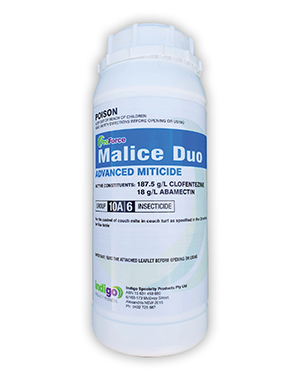
Indigo Malice Duo 1L is a combination insecticide. Indigo Malice Duo 1L only focus on the control of Couch Mite in Couch lawns – therefore, it is only suitable for Couch turf. Use this product with Wetter 600 for more effective results. Always read the safety directions and instructions on the product label before use.
SHOP NOW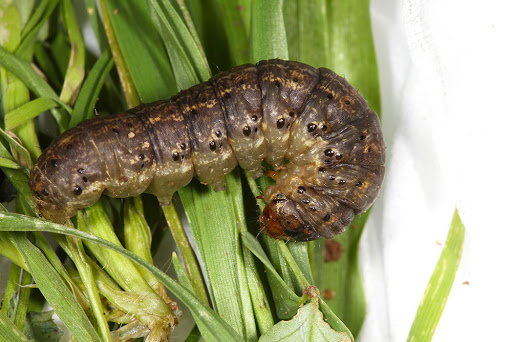 Cutworm is a caterpillar-like pest and is typically yellow, green, brown or grey and has stripes.
Cutworm is a caterpillar-like pest and is typically yellow, green, brown or grey and has stripes.
The larval stage of Cutworm appears as a smooth bodied, dark coloured caterpillar with longitudinal lines and brown to black spots on back and sides.
When mature the adult black Cutworm metamorphoses into a brown moth with a wingspan up to 55mm.
Adult moths lay their eggs in clusters in grass at night and are attracted to the light, making lawn surfaces around night-lit buildings more susceptible.
Cutworm larvae hatch and usually feed on the lawn during the night and take shelter during the day.
These larvae typically cut off your lawn’s leaves at the crown level and pull them into a burrow before feeding hence the name Cutworm.
Cutworms have two generations per year and overwinter as pupae in your lawn.
Some species of Cutworm produce enough generations so adult moths are present throughout the year.
Conditions favouring Cutworms on your lawn are pro-longed summers, early-autumns and humid weather.
To control the Cutworms myhomeTURF recommends a suitable insecticide with the Common Active Ingredient Chlorantraniliprole for long-term residual control.
myhomeTURF recommends using Acelepryn, an effective insecticide that can be purchased through our online store.

Acelepryn (10kg) is a non-scheduled reliable granular insecticide that has a low environmental impact. Suitable for Zoysia, Kikuyu, Couch and Buffalo grasses. Always read the safety directions and instructions on the product label before use.
SHOP NOW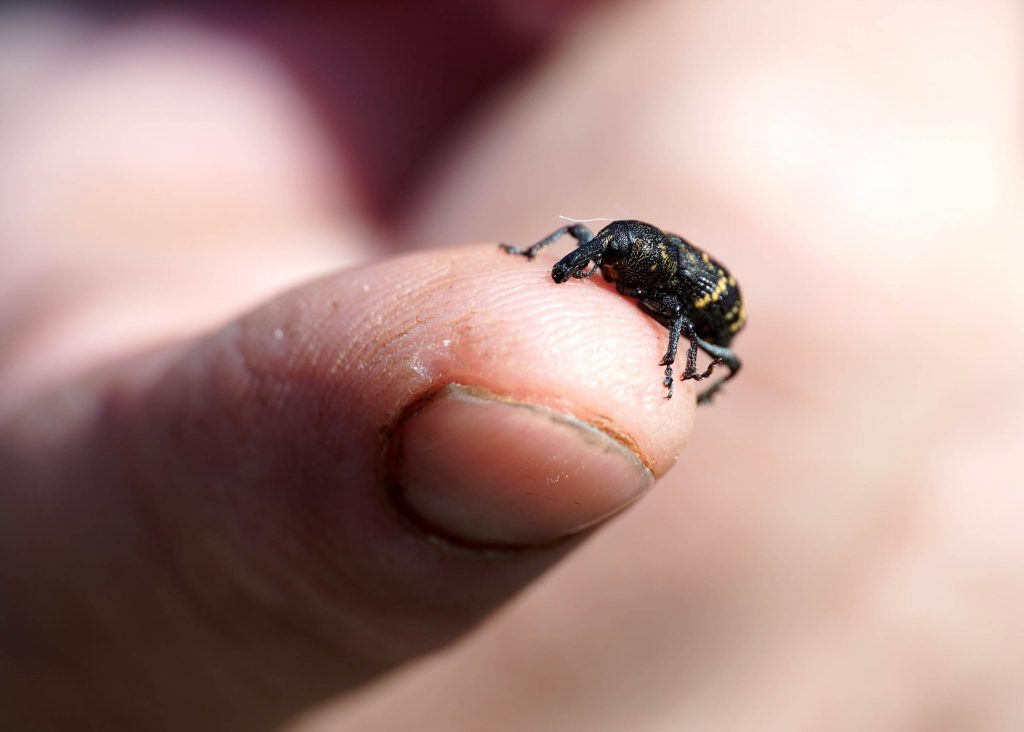 Garden Weevils are an introduced insect pest that cause damage to both edible and non-edible plants.
Garden Weevils are an introduced insect pest that cause damage to both edible and non-edible plants.
There are several different types of Garden Weevils to watch out for. They prefer warm, moist conditions and will hide during the day in loose bark, mulch, curled up leaves and thick layers of thatch.
The main pests are Billbugs [link to new page] and Argentine Stem Weevils, and it’s their larvae that are most destructive to lawns.
To control Garden Weevil larvae, myhomeTURF recommends products containing the active ingredients Imidacloprid, Bifenthrin, Chlorantraniliprole or Thiamethoxam.
myhomeTURF recommends using Acelepryn, an effective insecticide that can be purchased through our online store.
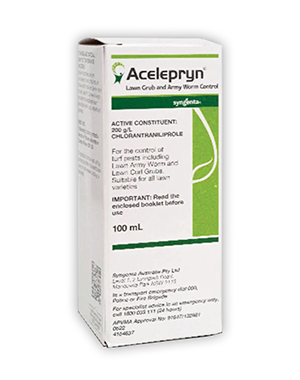
Acelepryn 100ml is a low environmental impact liquid insecticide for the control of larvae and beetles, including Billbugs. It is suitable for use on Zoysia, Kikuyu, Couch and Buffalo grasses.
SHOP NOW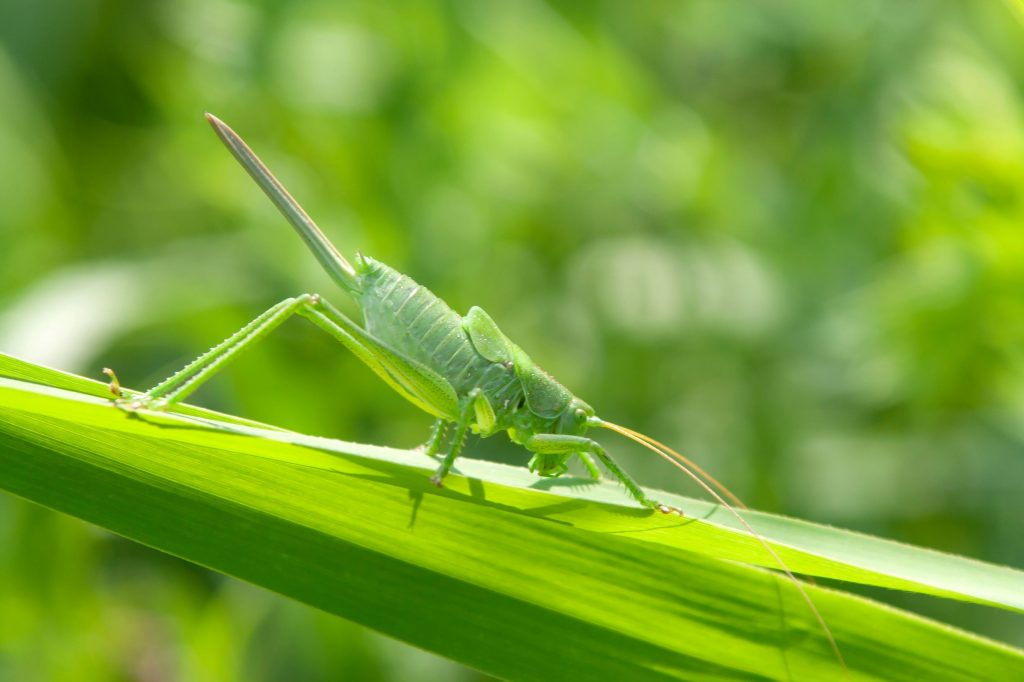 Grasshoppers are large, hard-bodied, chewing insects, typically 50mm to 120mm+ long with two large compound eyes provided for quick reflexes.
Grasshoppers are large, hard-bodied, chewing insects, typically 50mm to 120mm+ long with two large compound eyes provided for quick reflexes.
A Grasshopper’s powerful hindlegs which are used for jumping make a snapping noise, as do their wings.
During the day, male Grasshoppers make a chirping sound produced by rubbing their legs and wings together.
Female Grasshoppers lay eggs in either the ground or on leaves of grass, their eggs then hatch into nymphs (young) that grow through various stages similar in appearance to adult forms, often developing wings in adulthood.
There are many different species of Grasshoppers that can cause damage to your lawn, generally in colours of greens, browns and blacks, sometimes in oranges, blues, and reds, all in varying patterns.
Grasshoppers can be found hiding in the ground, on stems or on leaves of your lawn and cause the most damage from spring until autumn.
As soon as you see signs of Grasshoppers damaging your lawn myhomeTURF recommends a suitable insecticide for long-term residual control that has the Common Active Ingredient Bifenthrin.
myhomeTURF recommends the use of Venom, an effective insecticide that can be purchased through our online store.
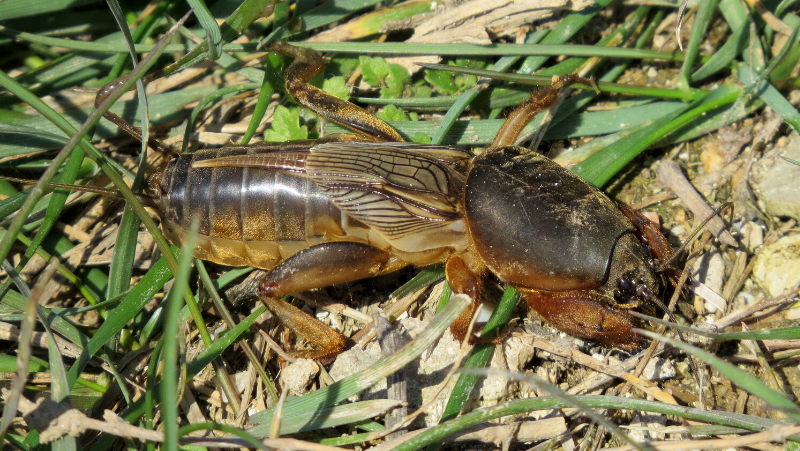 The Mole Cricket is a brown elongated insect pest with a hard, shiny head, wings and a body up to 50mm long.
The Mole Cricket is a brown elongated insect pest with a hard, shiny head, wings and a body up to 50mm long.
They possess large front legs with jagged claws for digging, and powerful hind legs that are used for removing loose soil while burrowing.
Female Mole Crickets lay their eggs from the beginning of November throughout the warmer months.
The adult male Mole Cricket dies after mating and the females die after laying their eggs.
Mole Crickets are most prevalent in your lawn from mid to late spring until the end of summer and prefer the habitat of moist soil.
To protect your lawn from Mole Crickets, keep it well feed with a good fertiliser.
As soon as you see signs of Mole Crickets myhomeTURF recommends a suitable insecticide for long-term residual control that has the Common Active Ingredient Abamectin.
myhomeTURF recommends Thumper, an effective insecticide that can be purchased through our online store.
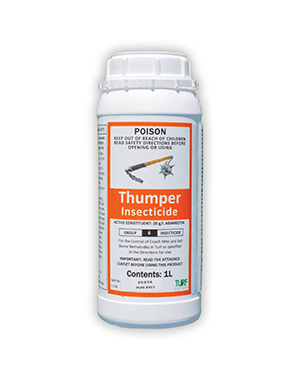
Thumper 1L is a fast-acting insecticide that provides long residual control. Suitable for use on Zoysia, Kikuyu, Couch, Buffalo grasses. For more effective results use with Wetter 600. Always read the safety directions and instructions on the product label before use.
SHOP NOW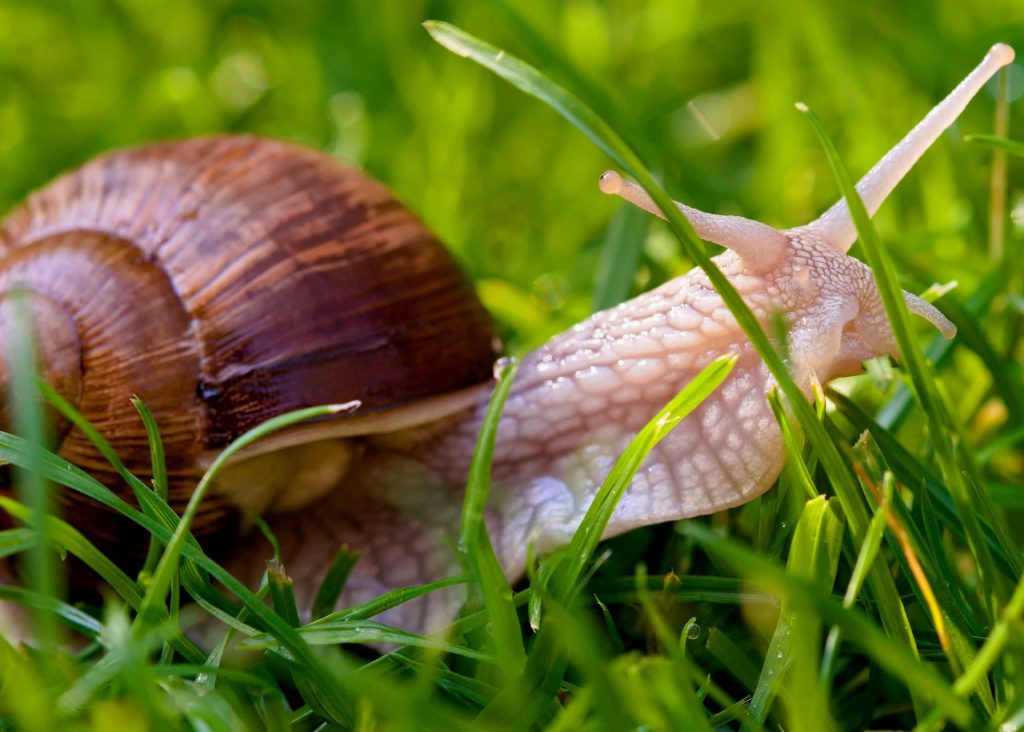 Snails and Slugs belong to the group of soft-bodied animals called gastropod molluscs.
Snails and Slugs belong to the group of soft-bodied animals called gastropod molluscs.
Snails have a large external shell used for protection, while Slugs have a small internal shell that helps them retain nutrients.
Both eat plants and vegetation, favour dark, moist habitats and leave a trail of slimy mucus wherever they go.
Effective long-term control of Snails and Slugs requires a combination of cultural, biological and chemical methods rather than relying on a single solution.
There’s a range of Snail and Slug pellets, granules and baits available from garden centres and hardware stores.
myhomeTURF recommends using products containing the active ingredients iron EDTA, Methiocarb or Metaldehyde.
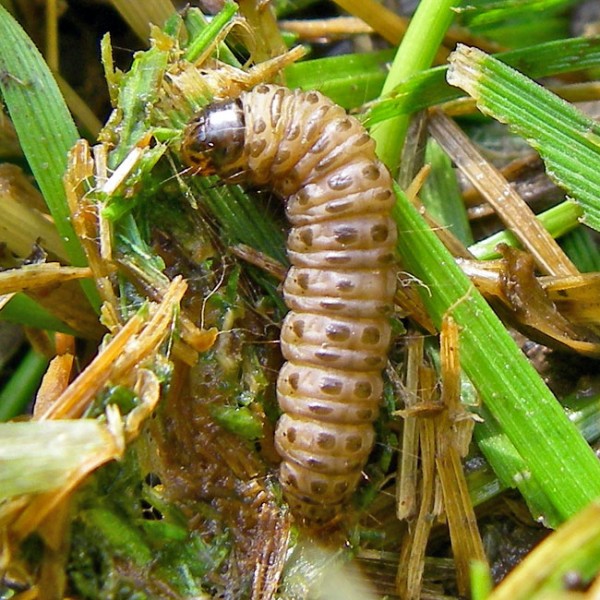 Sod Webworm is a relatively think caterpillar up to 25mm long with a pale green-brown body that is marked with characteristic dark spots along its length.
Sod Webworm is a relatively think caterpillar up to 25mm long with a pale green-brown body that is marked with characteristic dark spots along its length.
Sod Webworm are the larvae of an unassuming small brown moth and it is the larval feeding that causes dead brown patches in your lawns.
On close inspection of your lawn the leaf margins may be ragged where the young Sod Webworm larvae have been feeding.
Sod Webworm control is focused on the larva and not the adult moths.
To control the Sod Webworm myhomeTURF recommends a suitable insecticide with the Common Active Ingredient Chlorantraniliprole for long-term residual control.
myhomeTURF recommends using Acelepryn, an effective insecticide that can be purchased through our online store.

Acelepryn (750ml) is a non-scheduled reliable insecticide liquid that has a low environmental impact. Suitable for Zoysia, Kikuyu, Couch and Buffalo grasses. Always read the safety directions and instructions on the product label before use.
SHOP NOW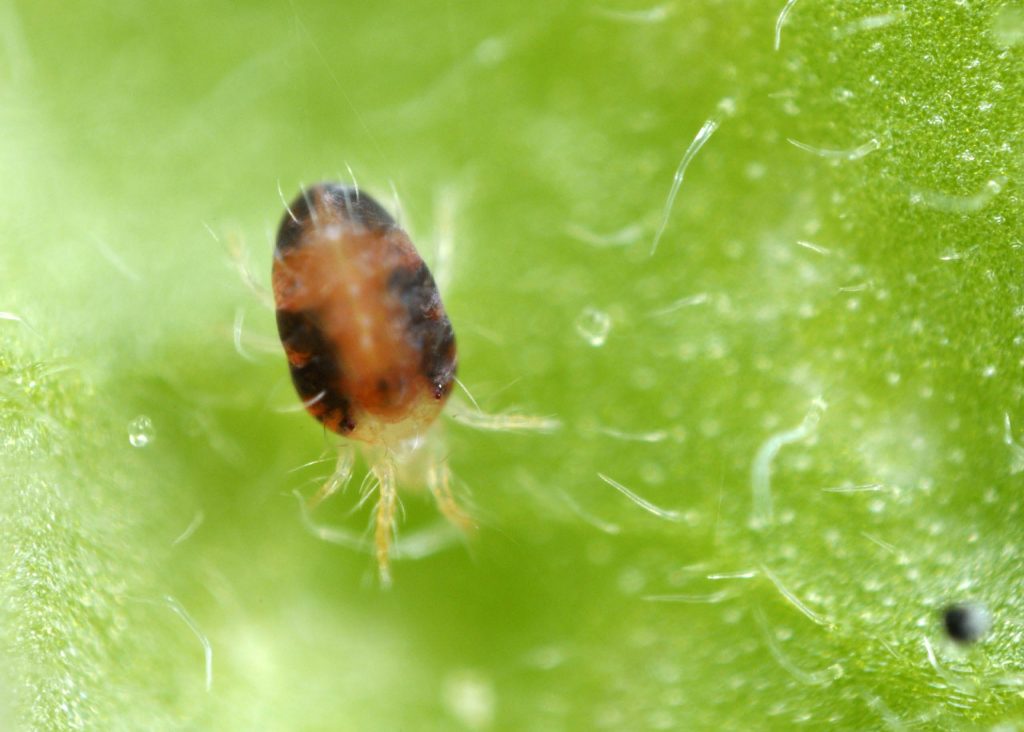 Two Spotted Mites are related to spiders as they have four pairs of legs.
Two Spotted Mites are related to spiders as they have four pairs of legs.
These tiny pinkish-red mites cluster on the underside of your lawn’s leaves often producing fine webbing.
Two Spotted Mites are active in hot dry weather when the life cycle from eggs to adults is completed in just a week, meaning the mites can develop pesticide resistance quickly.
The Two Spotted Mites dislike moist humid conditions so overhead watering can be useful as a control.
Symptoms of Two Spotted Mites are yellow mottling or bronzing of your lawn’s leaves and fine webbing seen on heavy infestations.
To control the Two Spotted Mites myhomeTURF recommends a suitable insecticide with the Common Active Ingredient Chlorantraniliprole for long-term residual control.
myhomeTURF recommends using Acelepryn, an effective insecticide that can be purchased through our online store.

Acelepryn (100ml) is a non-scheduled reliable insecticide liquid that has a low environmental impact. Suitable for Zoysia, Kikuyu, Couch and Buffalo grasses. Always read the safety directions and instructions on the product label before use.
SHOP NOW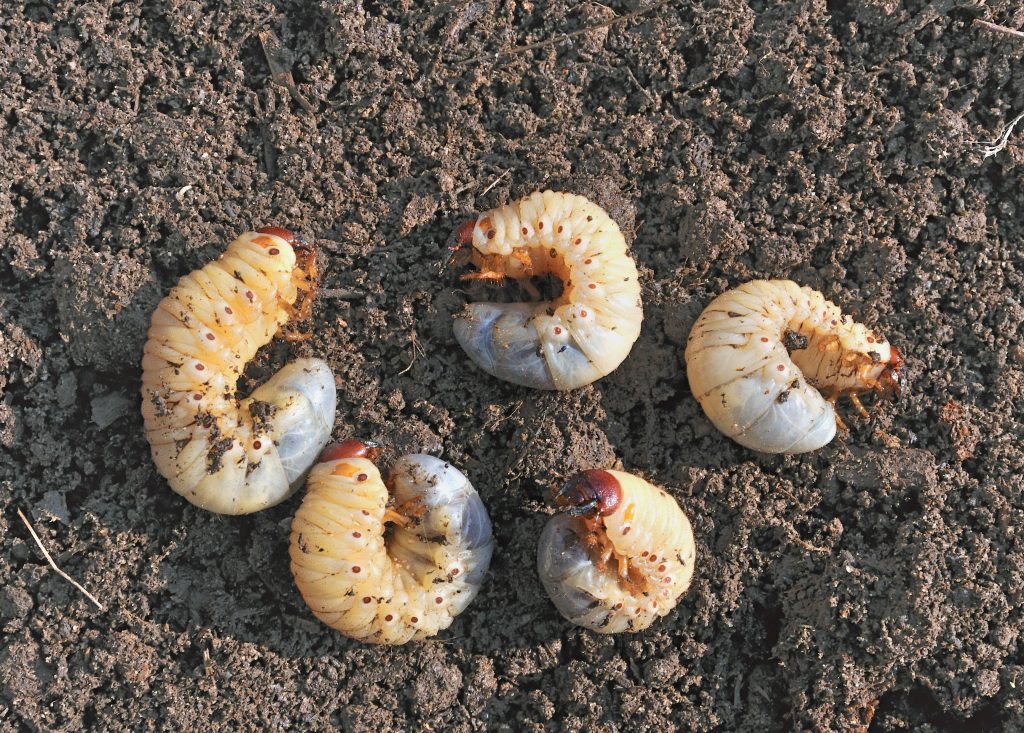 White Curl Grubs can be responsible for a lot of damage occurring to all lawn types as they feed on the roots of the grass.
White Curl Grubs can be responsible for a lot of damage occurring to all lawn types as they feed on the roots of the grass.
White Curl Grubs are white and plump with six legs and often with an orange head and are usually curled into a “C” shape – hence their name.
The earliest damage of White Curl Grubs will appear as patches of turf which seem to be dying off with an appearance of the drying out of the lawn’s leaf.
As damage to your lawn from the White Curl Grub progresses you will be able to pull up your lawn easily from the soil as the roots have been severed away.
To check for White Curl Grubs, pore a bucket of hot soapy water onto the affected area of your lawn and they should appear within 10 minutes.
To control the White Curl Grubs myhomeTURF recommends a suitable insecticide with the Common Active Ingredient Chlorantraniliprole for long-term residual control.
myhomeTURF recommends using Acelepryn, an effective insecticide that can be purchased through our online store.